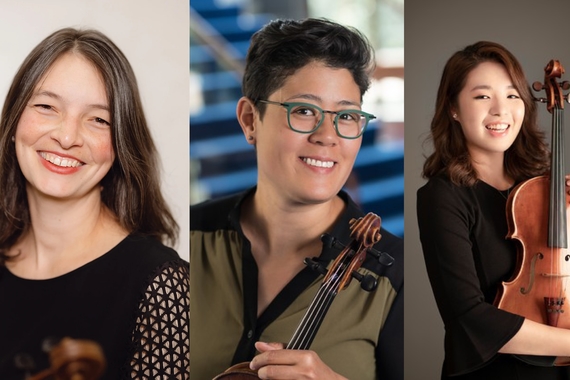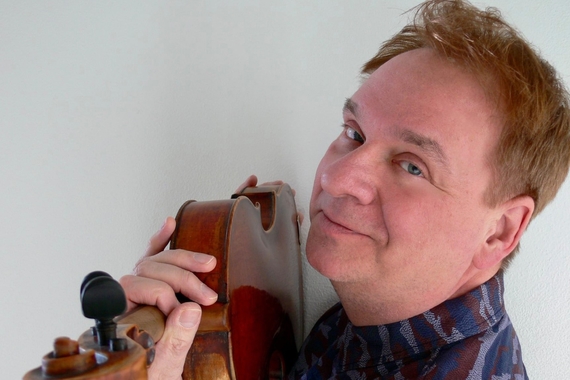Selecting Unique Contemporary Music for Performances

Director of Bands Emily Threinen
The upcoming University Wind Ensemble and University Symphony Orchestra virtual performance will feature two unique contemporary works featuring percussion instruments; Ryouran: Rhapsody by the noh play 'Sakuragawa' for Woodwind and Percussion (2017) by Tomohito Matsushita and Serenade for Winds and Percussion: Songs of the Night (1990) by David Gillingham. We spoke with Director of Bands and University Wind Ensemble Director Emily Threinen to learn more about the selection of these works for the upcoming program, airing Thursday, April 22 at 7:30 pm on the School of Music’s YouTube channel.
Highlighting percussion
ET: We are very excited to have a robust and talented group of percussion students in our ensembles this year. Finding original compositions that include percussion with 20 or fewer winds and brass has been a fun challenge for me. These two pieces were selected because they have unique characteristics within the compositions themselves and would complement the full program of repertoire, which includes Brahms, Serenade No. 2 in A Major, Op. 16 for strings, woodwinds, and horns.
Contemporary composers
ET: Knowing the Brahms Serenade was a piece that my colleague Mark Russell Smith was aiming to program, encouraged me to balance the repertoire with pieces by living composers and music that sounded very different from the language of Brahms.
Unique elements of the pieces
ET: Ryouran: Rhapsody by the noh play 'Sakuragawa' is composed in a rhapsodic form, which is free-flowing in structure including contrasting moods, color, and expression. Rhapsodies tend to be set in one movement and have a sense of spontaneity and improvisation. In this case, the composer does bring original material back, so the first few sounds and expressions one hears returns toward the end. What I find most unique about this piece is the design of solo lines with full ensemble—this piece strongly features individual performers and offers them room to express as they desire. Additionally, what makes this interesting is its tonal landscape (choice of harmonic motion with melodic lines) and orchestration. The percussion instruments (which include splash cymbals, bamboo wind chimes, temple blocks, and more) provide interesting color and depth to the composition.
Performance challenges
ET: All of the compositions we’ve been exploring for the academic year are composed for 20 or fewer instrumentalists, where everyone is a soloist. In such small ensemble repertoire, each individual is even more critical as each part is not covered by any other instrument. Every moment really counts!
The audience experience
ET: I hope the audience can hear the individual voices of the student performers and the composers in a symbiotic relationship. Each piece captures a different aesthetic and story. Ideally, as in all of our performances, we aim for the listeners to be taken to a creative landscape, or new place in their own minds.
The University Wind Ensemble and University Symphony Orchestra Virtual Performance will take place virtually on Thursday, April 22 at 7:30 pm on the School of Music’s YouTube channel. This concert is free and open to the public. Sign up for email updates at: https://bit.ly/32hWcAY.



